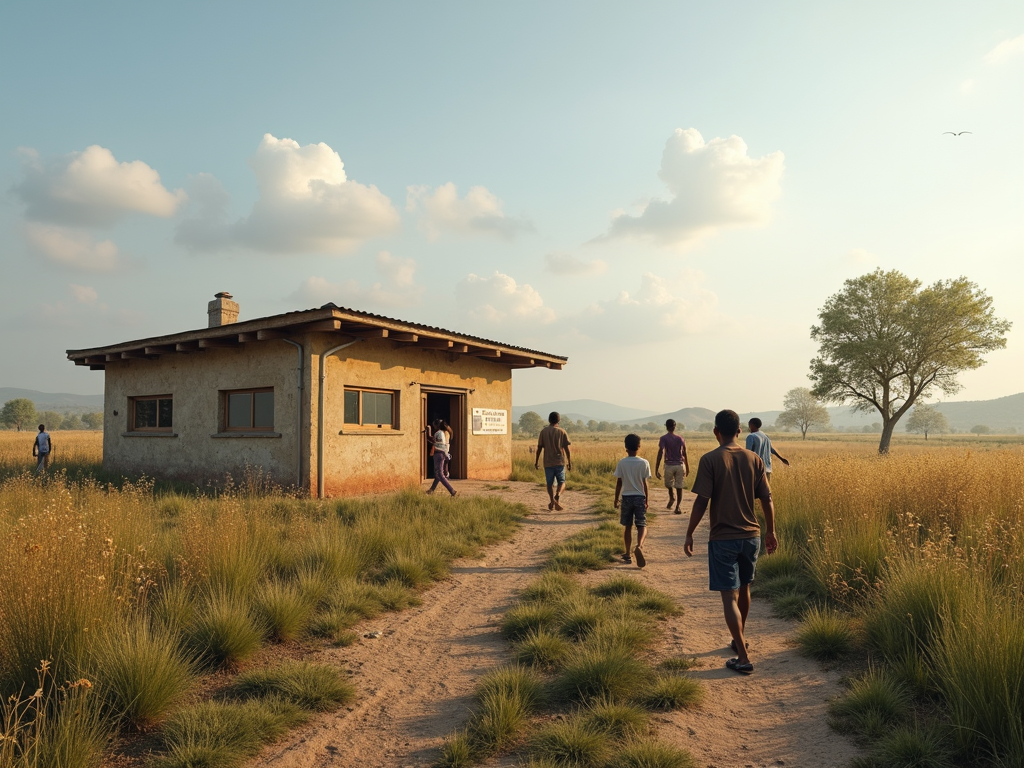Community health programs are initiatives aimed at improving the health and well-being of individuals and families within a specific community. They often operate through family wellness centers, which are healthcare facilities that provide a range of services, from primary care to specialized treatments. These programs are particularly crucial for underserved populations, including low-income families, immigrants, and those without health insurance. But their impact goes beyond just physical health—they foster a sense of community, offer educational resources, and support mental well-being. In this article, we'll explore how these programs are making a tangible difference in the lives of families, backed by real-world examples and expert insights.

Accessible Healthcare for Families
One of the most significant benefits of community health programs is their ability to make healthcare accessible to families who might otherwise go without. Many families face barriers such as high costs, lack of insurance, or geographical isolation. Community health programs address these issues by offering sliding-scale fees, accepting various insurance plans, and sometimes providing services for free.
According to the National Association of Community Health Centers, over 28 million people in the United States receive care from community health centers each year. These centers serve as a primary source of healthcare for many families, offering services that might otherwise be out of reach.
For instance, a family living in a rural area might have to travel hours to see a doctor. But with a community health center nearby, they can receive regular check-ups, vaccinations, and even specialist referrals without the long journey.

Moreover, these programs often provide transportation assistance or telehealth options, further reducing barriers to care. This accessibility is crucial for early detection and management of health issues, which can prevent minor problems from becoming major health crises.
Preventive Care and Education
Community health programs place a strong emphasis on preventive care, which is essential for maintaining family wellness. This includes routine screenings, immunizations, and health education workshops. By educating families about nutrition, exercise, and healthy lifestyle choices, these programs empower them to take control of their health.
For example, a community health center might host a workshop on managing diabetes, teaching families how to monitor blood sugar levels, prepare healthy meals, and incorporate physical activity into their daily routines. This not only helps manage existing conditions but also prevents new ones from developing.
Many community health programs offer workshops on topics such as smoking cessation, weight management, and chronic disease management. These sessions are often led by healthcare professionals and are designed to be interactive, allowing families to ask questions and share experiences.

Additionally, many programs offer prenatal and postnatal care, ensuring that mothers and babies receive the support they need during critical periods. This can lead to healthier pregnancies, reduced infant mortality rates, and better long-term outcomes for children.
Success Stories from Community Health Programs
To illustrate the impact of these programs, let's consider a few success stories.
In one urban community, a health program focused on childhood obesity. By providing free fitness classes, nutritional counseling, and family cooking workshops, they saw a significant decrease in BMI among participating children. Parents reported feeling more confident in preparing healthy meals and appreciated the community support.
Another example comes from a program that targeted mental health. By offering counseling services, support groups, and stress management workshops, they helped families cope with the challenges of daily life. One participant shared, "I was struggling with anxiety, but the support I received here has been life-changing. My whole family feels more at ease now."
In a rural community in the Midwest, a health program implemented a mobile clinic that visits remote areas, providing check-ups and health screenings. This initiative has led to a 30% increase in the number of families receiving regular healthcare services.

Mental Health and Social Support
Community health programs recognize that health is not just physical; mental and emotional well-being are equally important. Many programs integrate mental health services, offering counseling, therapy, and support groups for issues like depression, anxiety, and substance abuse.
Family wellness is not just about physical health; mental health plays a critical role. Community health programs often have mental health professionals on staff who can provide counseling and therapy. Additionally, support groups for parents, children, and caregivers offer a safe space to discuss challenges and find solutions together.
Furthermore, these programs often serve as community hubs, fostering social connections that are vital for family wellness. They might host events, support groups, or volunteer opportunities that bring families together, reducing isolation and building a sense of belonging.
For instance, a community health center might organize a monthly potluck where families can share meals, exchange stories, and support each other. This not only strengthens community bonds but also provides a platform for sharing health-related information and resources.

Challenges and Future Directions
Despite their many benefits, community health programs face challenges such as funding shortages, staffing issues, and the need to adapt to changing healthcare landscapes. However, innovative solutions are emerging. For example, some programs are partnering with local businesses or schools to expand their reach and resources.
Funding is a perennial challenge for community health programs. Many rely on grants and donations, which can be unpredictable. To address this, some programs are exploring social enterprise models, such as offering paid services to those who can afford them, to subsidize care for low-income families.
Looking ahead, the integration of technology, such as telehealth and mobile health apps, promises to make these programs even more accessible. Additionally, a growing emphasis on holistic care—addressing physical, mental, and social health—will likely enhance their impact on family wellness.

Conclusion
Community health programs are more than just healthcare providers; they are lifelines for families, offering accessible, comprehensive care that addresses the whole person. From preventive education to mental health support, these programs are transforming family wellness in profound ways. As they continue to evolve and expand, their positive impact on communities will only grow.
If you haven't already, consider exploring the family wellness centers near you to see how they can support your family's health journey.
Discuss Here